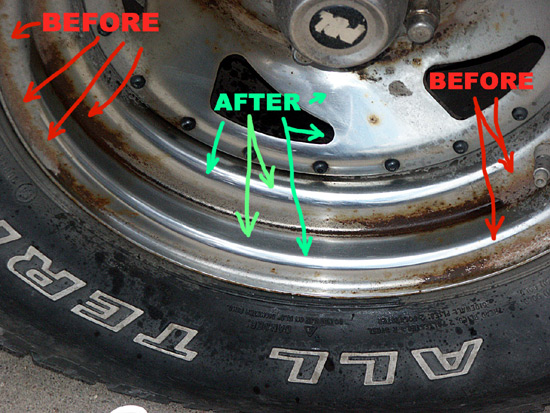Rusted car rims look terrible, and they can end up costing you quite a bit of money. If you’re tired of replacing your rims and fighting rust every season, you’re in the right place. Removing rust can be done with a simple 8-step process without breaking a sweat or spending too much money.
To get the rust off car rims, start by cleaning the tires, drying them out with rubbing alcohol, and scrubbing the rust with a wire brush. Apply a rust converter to strengthen the surface, then polish the rims with a converting agent. When you’re all done, add a protective coating to seal the rims.
Throughout this article, you’ll also learn the following information about rusted car rims:
Contents
Cleaning your rims and tires will free up debris to allow for a solid seal. You’ll be using protective coatings, brushes, and other products that all require a clean surface. Use a stiff brush to scrub away the debris. Make sure that you’re also adding Car Guys Wheel and Tire Cleaner to remove the dirt and brake dust.
For a helpful video about the importance of cleaning your rims and tires, follow this guide by Saabkyle04 on Youtube:
It’ll give you brief instructions to clean your tires and remove rust in a matter of minutes.
Note: Brake dust can darken, which makes it appear as rust. The video above mostly removes old brake dust, but it details how you can prep your rims for the following steps.
When the rims are clean, use rubbing alcohol on a soft cloth to dry out the excess moisture. There will undoubtedly be water left behind from cleaning the rims, so drying them off with a towel and alcohol is the best course of action. Don’t forget to dry off the tires as well to prevent them from dripping down onto the rims.
There will undoubtedly be water left behind from cleaning the rims, so drying them off with a towel and alcohol is the best course of action. Don’t forget to dry off the tires as well to prevent them from dripping down onto the rims.
You’ll need to use rubbing alcohol several times throughout these instructions. Have a bottle handy, as well as three or four clean, lint-free towels to dry the rims when it’s necessary. Microfiber is the best material for automotive parts, but traditional semi-abrasive towels will also do the trick.
Next, use a wire brush to scrub the rims. Any rust that remains will likely be removed with firm circular motions. Never scrub too hard; Otherwise, you could risk scratching the rims of your car. If you find any chunks of rust that go deep into the rims, leave them behind and proceed to the next step.
You can also use different types of automotive acid to strip rust. However, you’ll need the proper tools and clothing for the job.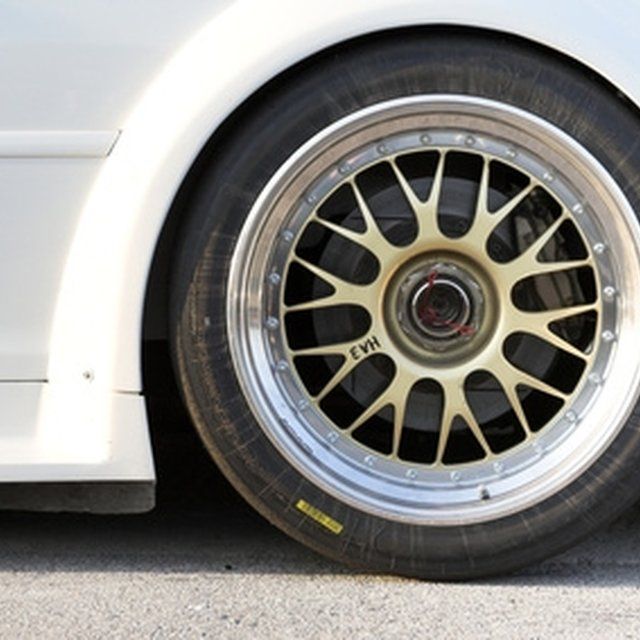 Failure to follow strict guidelines could damage your rims and tires. The good news is that these instructions won’t cause any harm, as long as you follow them step-by-step.
Failure to follow strict guidelines could damage your rims and tires. The good news is that these instructions won’t cause any harm, as long as you follow them step-by-step.
Adding a rust converter to rust that gathers along porous rims can preserve structural integrity. Rust converters work by turning the rusted portion of a rim into usable metal coated with protective sprays and paints to expand your rims’ longevity.
XIONLAB’s 2-in-1 Rust Converter and Metal Primer changes your rusted rims into new, shiny rims while also preparing them for paint and protective coatings. It comes in a can that you can attach a sprayer to, allowing you to apply the chemical to your rims in a matter of seconds. You can purchase this product in a one-gallon container or smaller pints.
When the rust converter dries, apply more rubbing alcohol with a fresh, clean cloth or towel. If you don’t follow this crucial step, you could risk trapping moisture in the seams of the previously rusted areas. Work in circular motions, ensuring that the alcohol dries before you start moving onto the next steps.
Work in circular motions, ensuring that the alcohol dries before you start moving onto the next steps.
Note: Always apply the rubbing alcohol to the towel, then rub it against the rim. In other words, don’t pour the alcohol directly onto the rims. You’ll end up using way more than you should, wasting your money and extending the drying time frame.
Once the alcohol has dried, polish the converter parts of the rims with a fine steel wool brush. Make sure it’s not too abrasive, and be gentle when you’re performing this step. Again, you shouldn’t apply too much pressure if you want to prevent scratches and structural damage. Note that soft, fine steel wool won’t scratch too easily.
If you’re concerned about scratches, you could also use a scouring pad. Although it’s not as effective, you’ll still be able to buff out the surface enough to prepare it for the final step of adding a protective coating. The goal with this tip is to make the rim look level from edge to edge.
When you’re all done cleaning, scrubbing, drying, and doing all of the other steps, it’s time to finish the rims with a protective coating. Without recommending any brand specifically, you should always contact the manufacturer of the rims to figure out which paint code or preventative you should use.
Every set of rims has their own recommendations. You might need to spray or paint them, but never leave them untreated. In most cases, you’ll be able to find the necessary instructions and recommendations by calling the car dealership that you bought the vehicle from or by researching the rims online.
Now that you’ve completed the whole process, some people prefer to go back and repeat everything over again. While it’s not entirely necessary, repeating the steps is a good way to ensure your rims’ longevity.
However, you shouldn’t scrub the rims with anything too abrasive. If you’re set on repeating the steps, just follow the final three.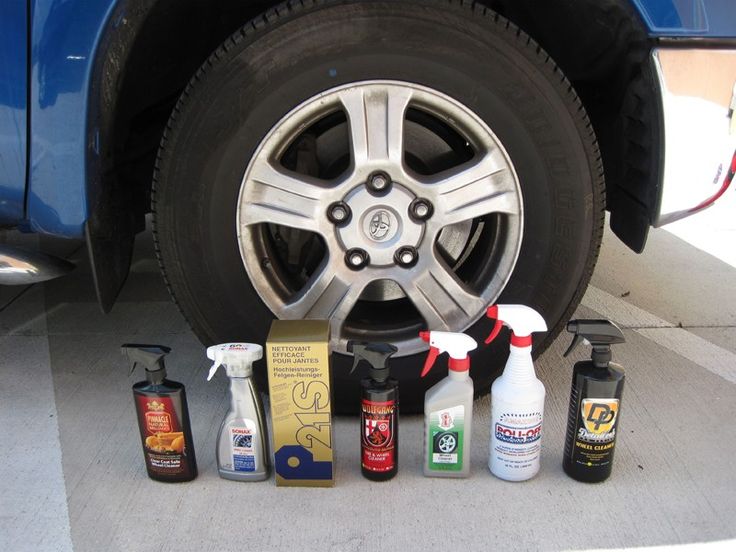 Dry them with alcohol, polish them with a wire brush, and add another layer of the protective coating.
Dry them with alcohol, polish them with a wire brush, and add another layer of the protective coating.
Note: Some coatings require a second or third layer, so make sure you know the instructions prior to repeating any of the steps.
Unfortunately, some rims are too damaged to be saved. If your rims aren’t responding to the treatment mentioned above, you might want to consider getting a new set. Before you start buying new rims to replace the old, rusted ones, check out the four possible signs that it’s time to replace your rims.
 This issue often calls for professional assistance. Although it’s not always a cause for replacement, you’ll want to have them checked out before you start driving on the road again.
This issue often calls for professional assistance. Although it’s not always a cause for replacement, you’ll want to have them checked out before you start driving on the road again.If the bolts on your rims are rusted, you should remove them, treat the rust, and consider getting replacements. There’s no point in reusing bolts that have been stripped by rust since they won’t hold the rims or hubcaps together.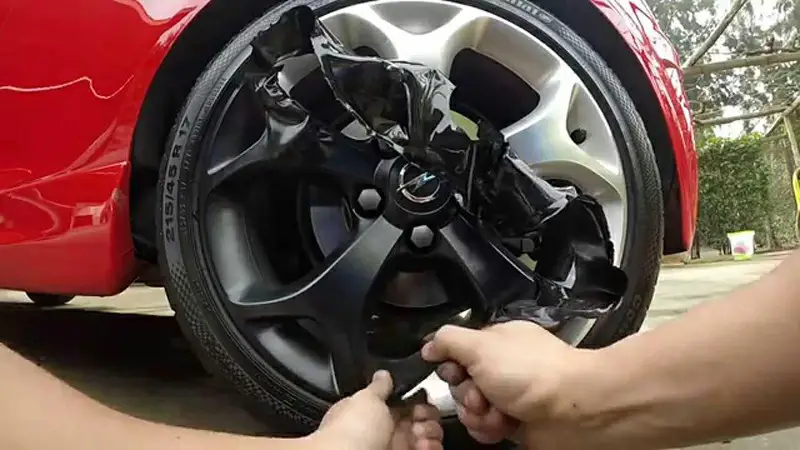 You can get a new set for only a few dollars, and they could end up saving your rims.
You can get a new set for only a few dollars, and they could end up saving your rims.
Rusted rims can cause severe problems for your vehicle. As you’ve seen throughout this article, you can treat and prevent rust from coming back with a few simple steps. There’s no need to hire a professional or spend all of your money. Instead, you can scrub them down and use the product recommendations in less than an hour.
Here’s a quick recap of the post:
Rust shows up on both old and newer tire rims, and while rims are painted and finished to avoid rusting, the process isn’t always effective.
Therefore, if you have rust on your rims, perhaps you’re wondering how to remove it. If you’d like to find out, keep reading to see what I gathered on this topic!
When removing rust, you first have to wash the rims with hot water and soap and scrub with a brush to remove as much of the rust as possible. If it still sticks around, you’ll likely need to invest in a rust-removing cleaner. However, there are also many DIY options available such as vinegar.
For information on different chemicals to use in removing rust from tire rims, as well as great commercial options for rust remover, keep reading for more useful facts!
When a tire rim is rusted, that portion of the rim has likely turned into rust. Therefore, if the majority of your rim is covered in rust, then you will likely be unable to save it. However, you may attempt to use a rusty-metal primer to save the metal.
If the wheel is quite rusty, you may be able to use a rusty-metal primer, which will prepare the metal for scrubbing.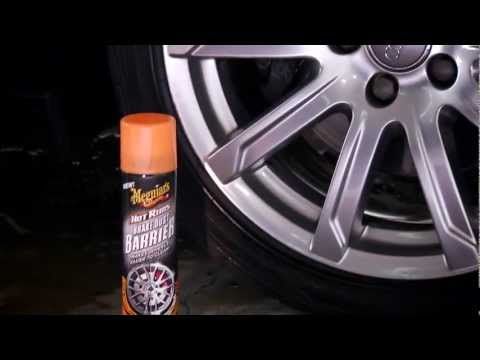
However, if the rim is only somewhat rusted, you may be able to scrub it with some hot water and degreasing soap. Once you get all the rust off, be sure to protect the wheel with a shine.
As well, you may need to use brake dust for rust that is tougher to remove. A wire brush is often necessary to remove the rust completely, and afterward you can buff the rim with a microfiber cloth to bring the shine back and remove the last of the rust.
In some cases, you may need an acid-based cleaner, which you can find at most auto shops.
However, you may be able to hire a professional detailing company at this point, since rims that contain an excessive amount of rust are often much more difficult to clean.
Nevertheless, if you decide to use an acid-based cleaner, be sure to follow the directions carefully, otherwise, the cleaner may not work completely.
For rims that are completely rusted, you may need to use a sandblaster, as the heavy sand will remove the rust without damaging the metal.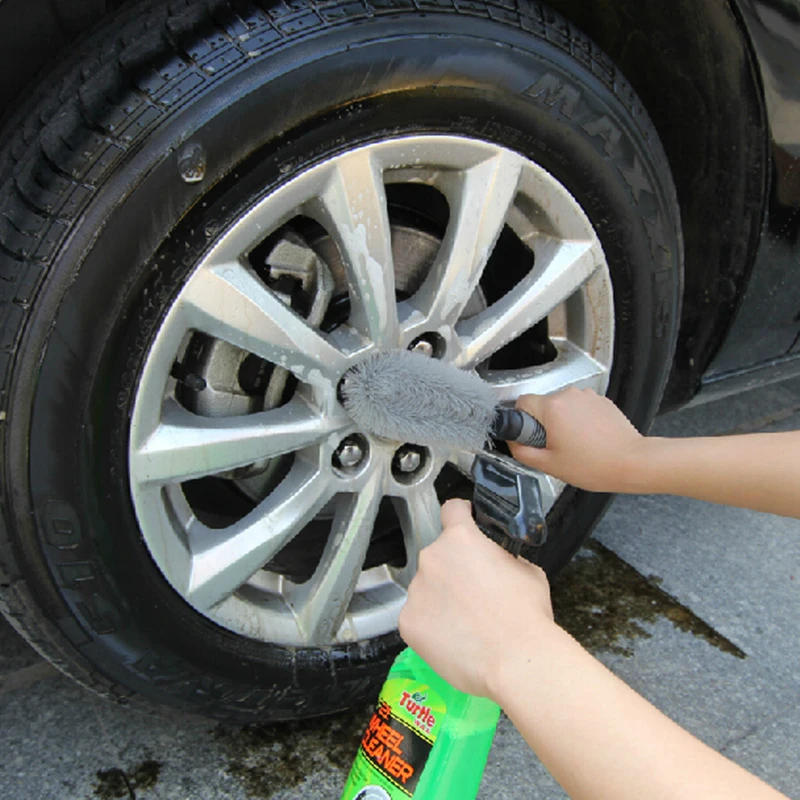
In most cases, you can purchase a sandblaster, though they’re generally quite expensive. Instead, you may want to see if you can rent one.
Furthermore, you should plan on refinishing and repainting the rim afterward, as a sandblaster will remove both rust and paint.
Vinegar removes rust by reacting with the rust and allowing it to dissolve. In fact, vinegar is often just as or more effective than some commercial options.
In order for the vinegar to react with the rust properly, the tire rims will need to soak, meaning you’ll need a large amount of vinegar.
On some occasions, toothpaste can remove rust, though it’s not nearly as effective as some other options. Instead, toothpaste is best for removing rust on small items, such as silverware and tools.
If you wanted to use toothpaste on rims, you’d need to invest in a lot of toothpaste, and in many cases, using toothpaste is more expensive than using a commercial product, since you’d need so much of it.
However, if you choose to use toothpaste, the best option is white, non-gel toothpaste.
In many cases, this method works best when you only have a small spot of rust you need to remove, because if you apply rust to the whole rim, the process will likely be quite slow.
While regular WD 40 won’t get rid of rust, the same company does make a specialty product to get rid of rust, which dissolves rust fairly quickly and can be used on bare metal.
According to most reports by previous customers, this product is very effective, meaning it’s a solid option if you want to remove rust from your rims.
In many cases, hydrogen peroxide can actually speed up the rusting process. Therefore, it isn’t the best option for rusty rims. However, you can sometimes utilize hydrogen peroxide to remove rust if you follow some careful steps:
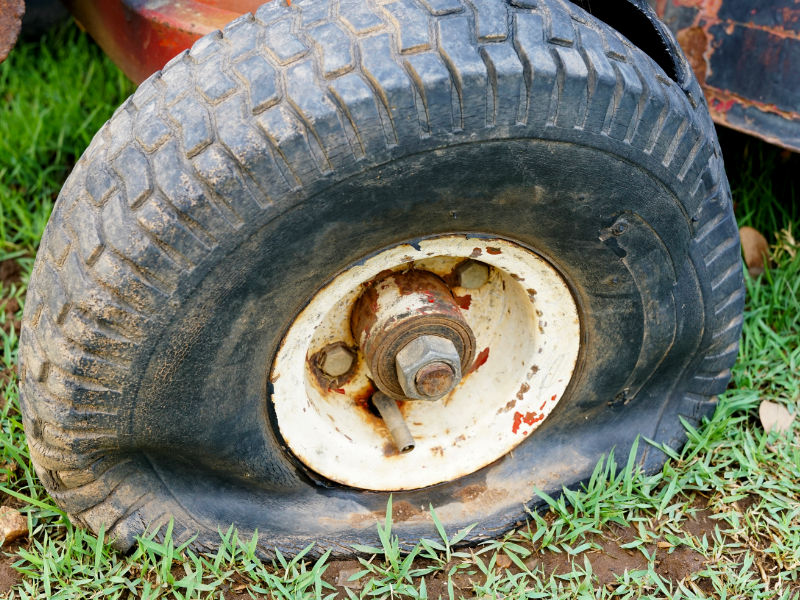 Whenever the hour is up, wash it off with water.
Whenever the hour is up, wash it off with water.Note that while the above method does work, it only works on moderately rusty items, and can only remove light rust and rust stains in most cases.
To know more about cleaning tires, you can also see our posts on homemade tire shine, how to clean whitewall tires, and how to soften tires.
While you can remove rust from most rims, the extent of the rusting is critical. If there is only one spot of rust, removing it is relatively simple, but if the majority of your rim is covered in rust, the process is more complicated.
However, there are several DIY options for removing rust, as well as commercially available options. Overall, DIY options work just as well as commercial options when you use them correctly.
Tips for motorists0
Traffic safety directly depends on automobile disks.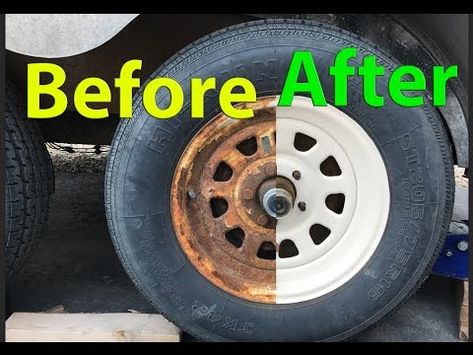 Therefore, it is very important that they are in good technical condition. And besides, they perform design and decorative functions. The general appearance of the exterior of the car depends on them. What to do if rust appears on car rims? Below we will talk about how to bring them to perfect condition.
Therefore, it is very important that they are in good technical condition. And besides, they perform design and decorative functions. The general appearance of the exterior of the car depends on them. What to do if rust appears on car rims? Below we will talk about how to bring them to perfect condition.
Content
Wheels are an important part of any car, so it is important to keep an eye on the cosmetic and technical aspects of disks and tires. Today it is not difficult to find a suitable disc care product.
They need proper care. It is also very important to keep them in good condition. If the disc is just dirty, then it's okay, but if there is damage and cracks, then this is very dangerous for the driver and passengers.
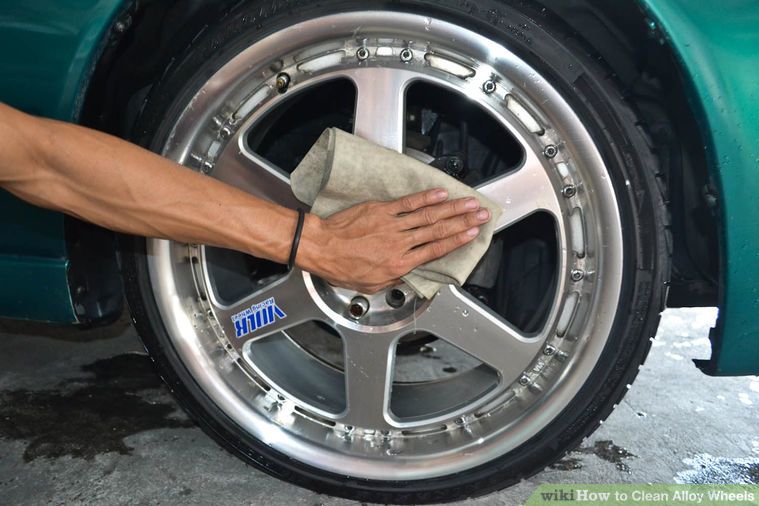
Every 6 months with gray rubber it is very important to check the shape of the rims to check for deviations from the original shape. If the geometry of the disks is changed, then it is forbidden to operate the car. You will also need to repair damage and chips.
Rust often develops on steel rods. It not only spoils the aesthetic appearance, but can damage the integrity and adversely affect the design of the disc. Especially often rust appears on stamped discs. They need to be looked after especially.
Learn how to remove rust with anti-corrosion agents. Grinding using a metal brush with further priming and painting will also be relevant. It is also recommended to use sandblasting, but it will be much more expensive to remove rust with it. After such processing, the game must be painted with enamel and powder dye.
Note that wheel washing is a cosmetic procedure, not a technical one. However, during its implementation, it is necessary to pay attention to cleaning not only the outer area of the disc, but also the inner one, since it is in this area that various contaminants accumulate, which lead to damage to the steering wheels.
However, during its implementation, it is necessary to pay attention to cleaning not only the outer area of the disc, but also the inner one, since it is in this area that various contaminants accumulate, which lead to damage to the steering wheels.
Use a wire brush, zinc rust remover and black paint spray can. Brush off any excess rust and sand both sides of the rims with a chisel. Once applied, let it dry. And cover with a protective film of zinc and phosphorus, after which the disc will be ready for paint.
Comments 0 Share:Loading ...
03/15/2021
Light alloy cast and forged wheels look good as long as the decorative coating is intact.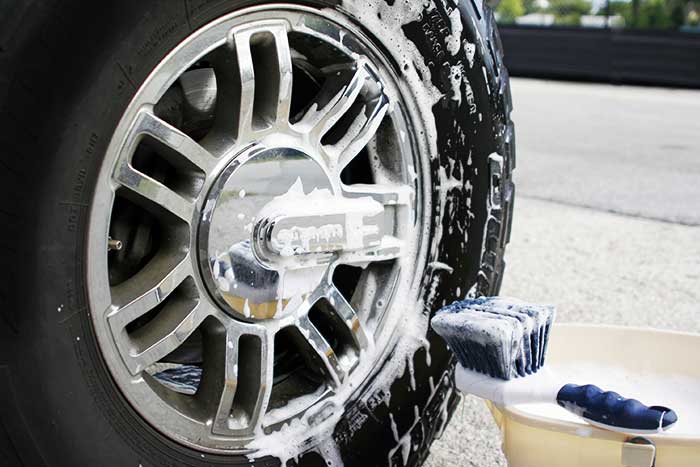 But exposure to road chemicals, dirt and dust leads to damage to the paintwork and corrosion of the metal. How to clean alloy wheels from oxidation and protect them later - we will tell in the article.
But exposure to road chemicals, dirt and dust leads to damage to the paintwork and corrosion of the metal. How to clean alloy wheels from oxidation and protect them later - we will tell in the article.
A distinction must be made between rust and aluminum corrosion. They differ in color: aluminum oxides are dark, and the combination of iron with oxygen has a characteristic red color.
A rusty coating is also formed from brake dust that has eaten into the varnish coating. It is very difficult to remove traces completely. Especially if the discs were not cared for.
The most popular folk remedy is vinegar.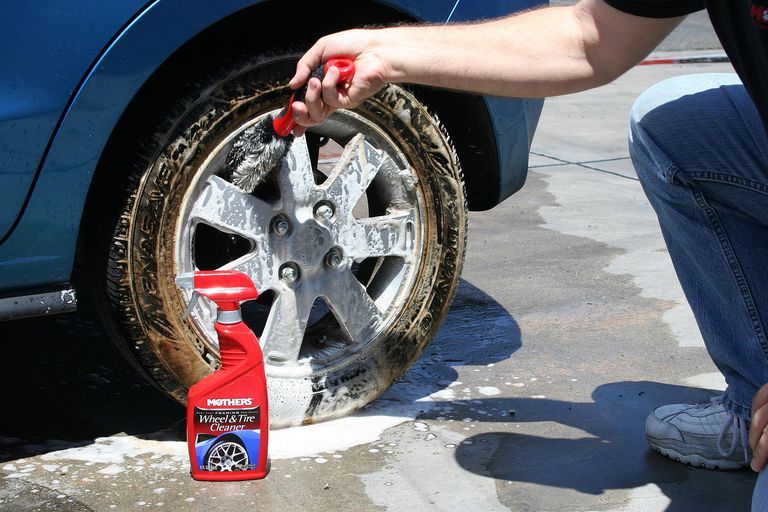 The natural acids that make up its composition are able to fight plaque and rust. It is diluted with boiling water at home. But it is not recommended to use such an aggressive solution for polished alloys. As well as a special liquid for the oven. In this case, the motorist runs the risk of damaging the rubber as well.
The natural acids that make up its composition are able to fight plaque and rust. It is diluted with boiling water at home. But it is not recommended to use such an aggressive solution for polished alloys. As well as a special liquid for the oven. In this case, the motorist runs the risk of damaging the rubber as well.
Various cleaning powders too - a place in the kitchen! Abrasives will successfully cope with plaque, but may leave scratches on the metal surface. And that will only make the situation worse.
Rust is most effectively cleaned with automotive chemicals. At the same time, traces of other contaminants are simultaneously dissolved and washed off.
Professional cleaners are divided into:
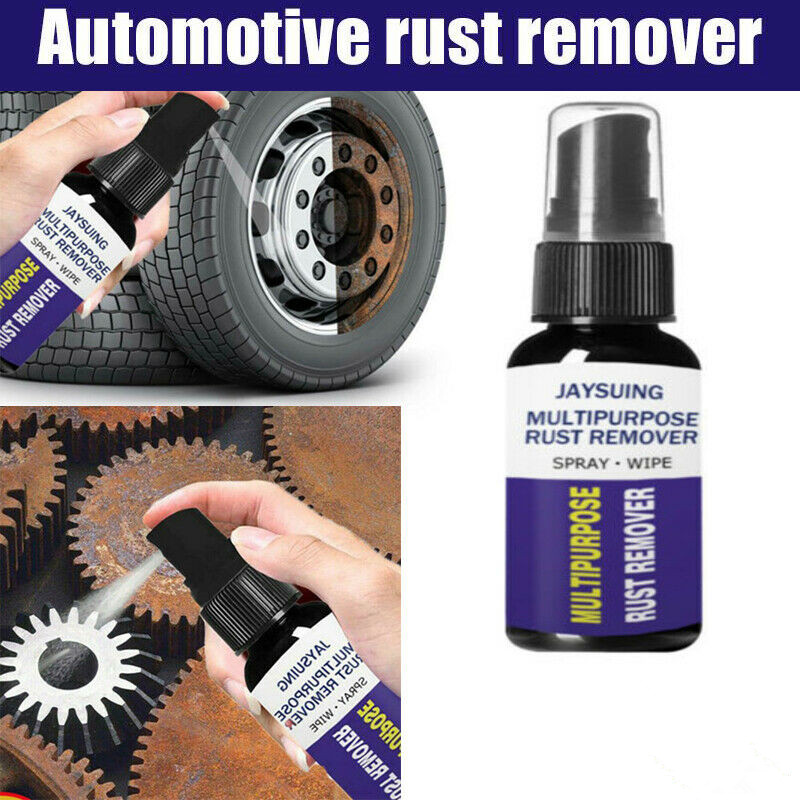
The latter are able to clean no worse than acid, but at the same time they are safe for paintwork, rubber and plastic.
An example of a fast-acting tool would be the Turtle Wax Wheel Clean spray. Exposure time - no more than a minute. The DoctorWax foam disc cleaner and the Hi-Gear wheel disc cleaner (aerosol) work no less well.
For better cleaning, it is recommended to remove the tire from the wheel. However, modern tools allow you to wash discs without dismantling. The procedure is as follows:
Some liquids contain a color indicator for better removal.